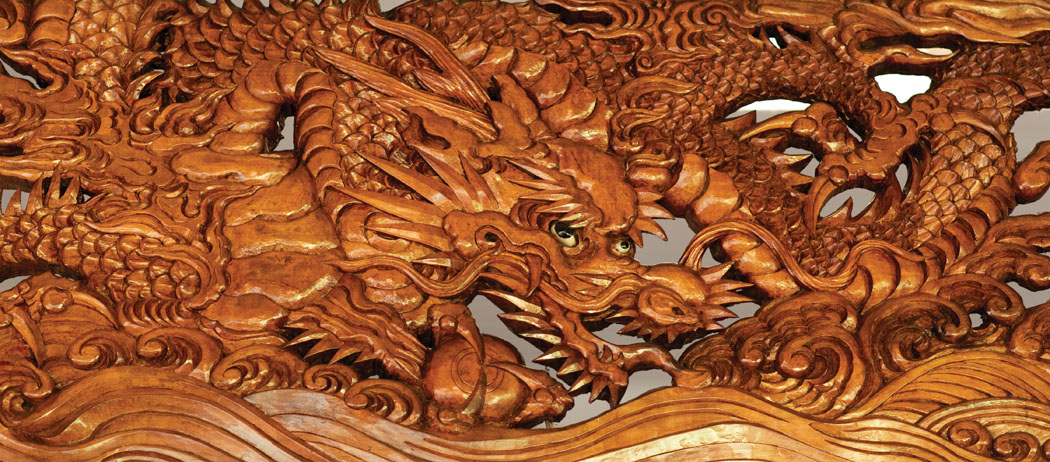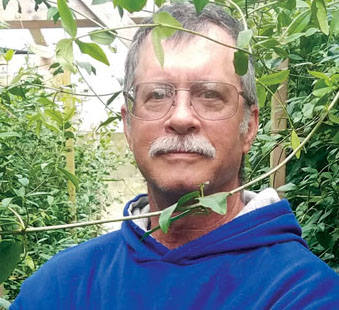
Hawai‘i Handweavers’ Hui: Hard Work and Endless Play
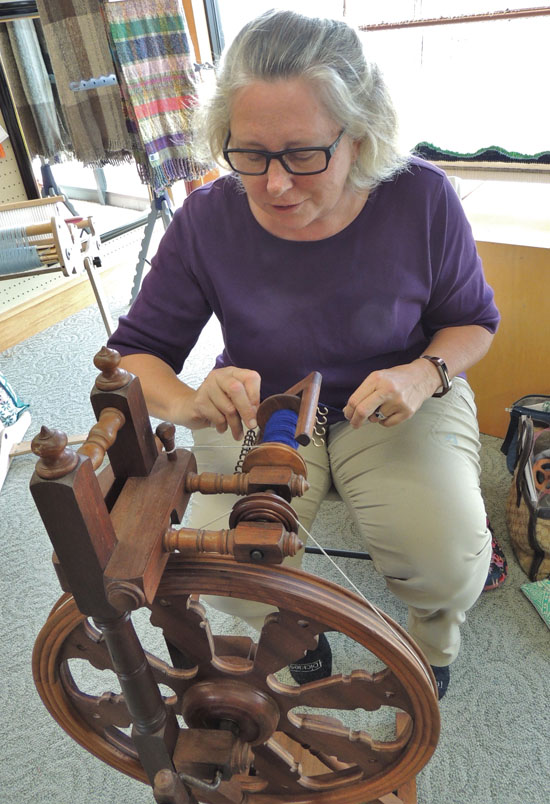
By Catherine Tarleton
Words about weaving conjure up artistic images all of their own. We weave stories, spin a “yarn,” and embroider narrative with detail. In Hawai‘i, we weave a tapestry of cultures, from East and West, ancient and current. Weaving has always been both practical and decorative, form and function. And so it goes with today’s weavers—as members of the Hawai‘i Handweavers’ Hui, a statewide collaboration of weavers, spinners, knitters, and more—come together to celebrate, educate, innovate, and elevate these traditional crafts. They are artists, and more.
“I’m an engineer,” says Joelle Dubois, who’s been spinning for two years and weaving for four. “I like the combination of mechanics and equipment, with being able to produce something for the home. You start from scrap and produce beautiful things for yourself and others.”
Jill Cohen, a five-year hui member from Colorado says, “I’m a logical person, and weaving is very logical, very mathematical. The loom does the work.” Prior to moving to Mountain View on Hawai‘i Island, she worked for the Budget Office for the City and County of Denver. “Weaving keeps my interest. There are so many different possibilities, different patterns, different things you can do. It’s also very meditative, calming, kind of zen.”
“It’s good for the brain, because weaving involves so much math,” says weaver, author, and retired food writer Joan Namkoong. “I’ve been a weaver while I was a foodie, about 35 years,” says Joan. “I moved to the Big Island 14 years ago, and then I had more time, and started doing more.”
The Hawai‘i Handweavers’ Hui, Hawai‘i Island chapter hosted a recent exhibition, “Threads Allure,” at Pictures Plus in Kailua-Kona. It was designed to show an interactive relationship between woven fibers and the viewers themselves. “The intention is, whatever was in the show, you could go and feel and touch and experience,” says Joan. “With fiber, you want to go feel it. Definitely, the tactile experience appeals to me, especially silk. It’s soft and silky but very strong.”
Twenty-one different works, from the islands of O‘ahu, Hawai‘i, and Kaua‘i, invited visitors to touch and enjoy scarves, towels, wall-hangings, samples, and more. The items are made from everything: handwoven cotton chenille, hand-extracted coconut fiber, and sanseveria. There’s threaded bamboo with onion skin and sandalwood, Kool-Aid-dyed silk and wool shawls, and something called pattern-undulating indigo.
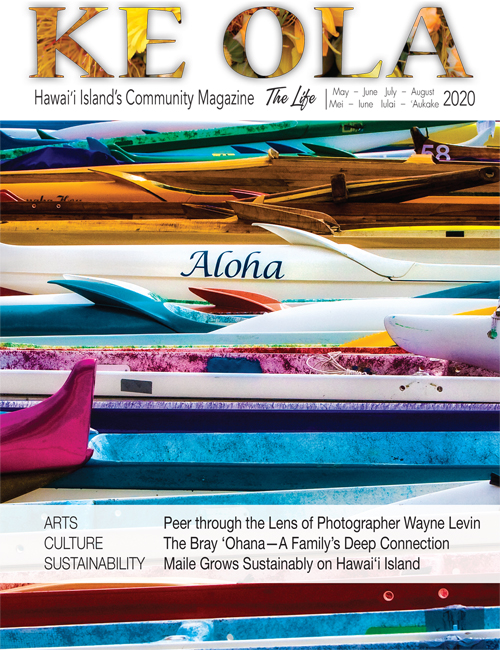
The show is true to the Handweavers’ Hui’s mission, to promote excellence in handweaving in all its diversity of materials and techniques. It’s easy to see these creators share a joy and passion for the fiber arts, at the heart of the Handweavers’ Hui. Founded on O‘ahu in 1953, the hui now has more than 100 members and a second chapter on Hawai‘i Island. In addition to practicing their own crafts, they are dedicated to promoting them by teaching in schools and community centers.
Joan remembers learning to weave in classes at Bishop Museum. “I worked with some old-time weavers who started the hui, like Ruthadell Anderson,” she says. “She made the two big tapestries in the State Capitol Building, with a group of weavers.” The tapestries were hung in the House and Senate Chambers for the building’s opening day in 1969.
Joan says, “Weaving is one of those things…It’s kind of a dying craft, and mostly done by older people,” she says. “We all take it for granted. It’s been done for millennia.”
Weaving is historic and universal; it was done everywhere there were materials to be used. Indeed, the early Polynesians had been master weavers before they ever sailed to Hawai‘i. And, although the iconic Hawaiian kapa cloth was made by pounding plant fibers instead of weaving them, weavers were highly regarded, as were the plants that yielded weaving materials. So much so, that of the 24 carefully chosen “canoe plants” brought to the islands by early settlers, five of them related to weaving were allowed precious cargo space.
According to the 19th-century historian David Malo, “This work [weaving] was a source of considerable profit; so that women who engaged in it were held to be well off, and were praised for their skill. Such arts as these were useful to the ancient Hawaiians and brought them wealth.”
It must have been jaw-dropping for those lifelong weavers, when outsiders arrived on ships with giant cloth sails, their crews in cotton clothing of every color. One story indicates the first loom weaving in Hawai‘i was done by a man, a sailor on orders from King Kamehameha I.
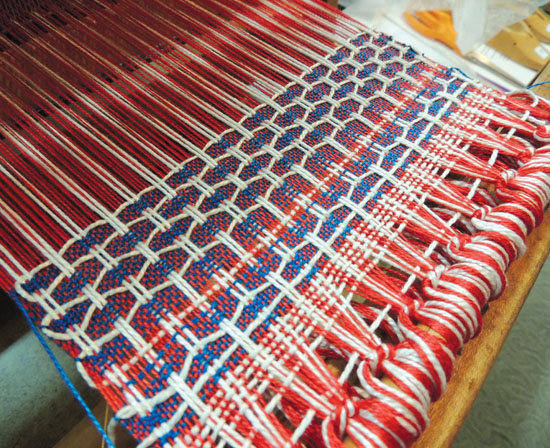
In 1809, the king learned of Archibald Campbell, who had been abandoned by his ship (not the other way around, as some stories tell). Archibald was a sailmaker, and in spite of the fact that both of his feet were cut off (why was never known), he was still able to get around, and to work. Kamehameha had him repair his own sails, and then asked him to make canvas for new ones.
Archibald built himself a loom, and hired a boy to work the treadles, since he couldn’t manage without feet. They wove canvas from a kind of thread made by women, from olonā bark (normally used for fishing lines), which they stripped, squeezed, scraped, and spun into twine by rubbing it on their bare legs. It’s said that when Archibald left the island, the king did not pursue sail-making.
Later, missionary women would bring in many bolts of fabric to be sewed into their long dresses. Of course, the ali‘i women wanted to emulate them, and of course, the weavers wanted to learn how to make them. In 1835, Miss Lydia Brown was sent with the 7th Company of missionaries on the Hellespont from Boston, specifically to teach women the arts of spinning, weaving, and knitting.
At age 55, she set out to accomplish that mission on Maui, with a “religious” fervor. She harvested wild cotton (likely planted by botanist Don Francisco Marin in 1812), then carded and spun it into thread, re-purposing an old wagon wheel for spinning. She rented classroom space in July and, according to author Rossie Moodie Frost*, she and her students made 90 yards of cloth by the end of the year.
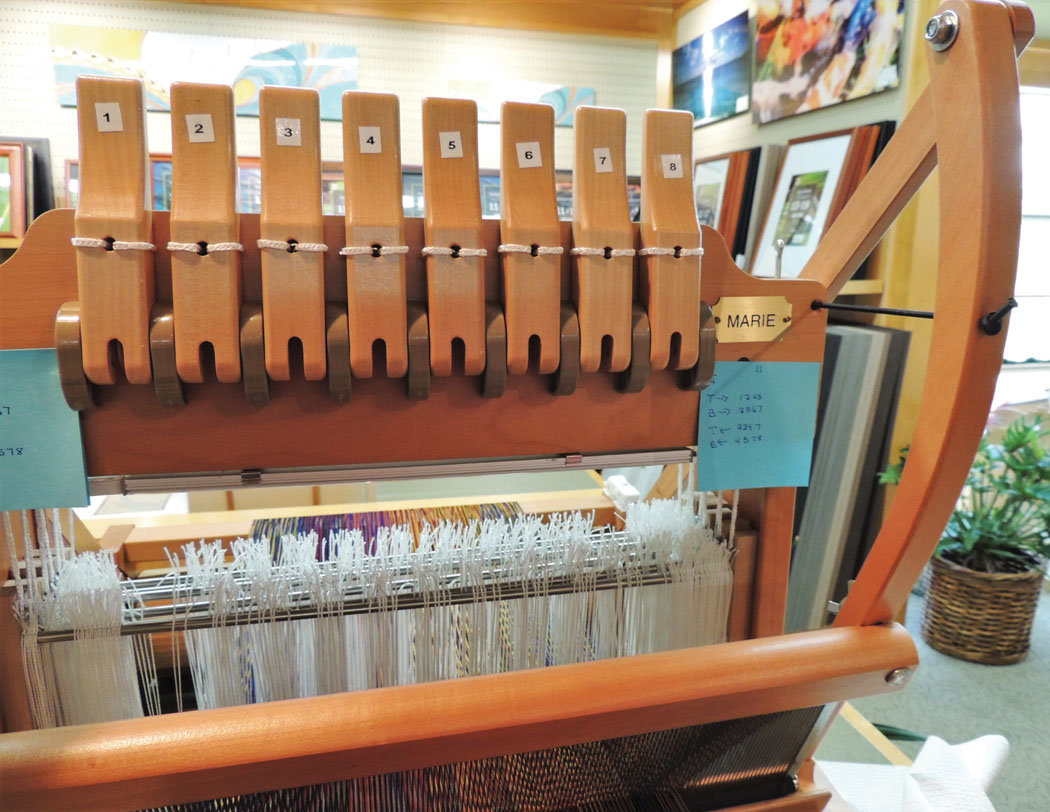
In 1837, Miss Brown sent three of her students to the first factory ever built in Kailua-Kona, an ambitious project of Governor Kuakini, which eventually employed 30 Hawaiian women. A cotton gin was added, more cotton planted in the islands and the industry grew to the point where Hawai‘i exported hundreds of bales of cotton. What seemed like a tremendous opportunity, however, was overshadowed by the gigantic sugar industry which dominated Hawai‘i’s economy in the late 19th and early 20th centuries.
Deeply rooted in the past, the arts of weaving have played, and continue to play, an important role in history, culture, and everyday life.
“There is a local teacher who wants us to come into her class and do a demonstration on weaving, not just how to do it, but how the industrial revolution changed everything,” Jill says. “Think about it. The invention of the sewing machine, the whole manufacturing process. The economic and social impacts were huge.” She holds a patterned cotton towel that took her five hours to hand weave. It could be finished in moments by machine, minus the love and care, the pleasure of it.
“I just play,” says Joan, “mostly with silk. I make scarves, shawls, cotton dish towels. Once a year I have a sale and sell it all, and start over again. Weaving is fun. People specialize, but I do plain weave—over under, over under. There’s so much you can do with changing colors, changing threads, different kinds of thread. Sometimes I throw in beads. It’s kind of endless play.”
The Hawai‘i Island chapter of the Hawai‘i Handweavers’ Hui provides demonstrations periodically where they exhibit weaving and spinning in various locations, such as Hilo Public Library and Kahilu Theatre in Waimea. In addition, workshops, weaving days, and other activities take place around the island during the year (see above). New members are always welcome. ❖
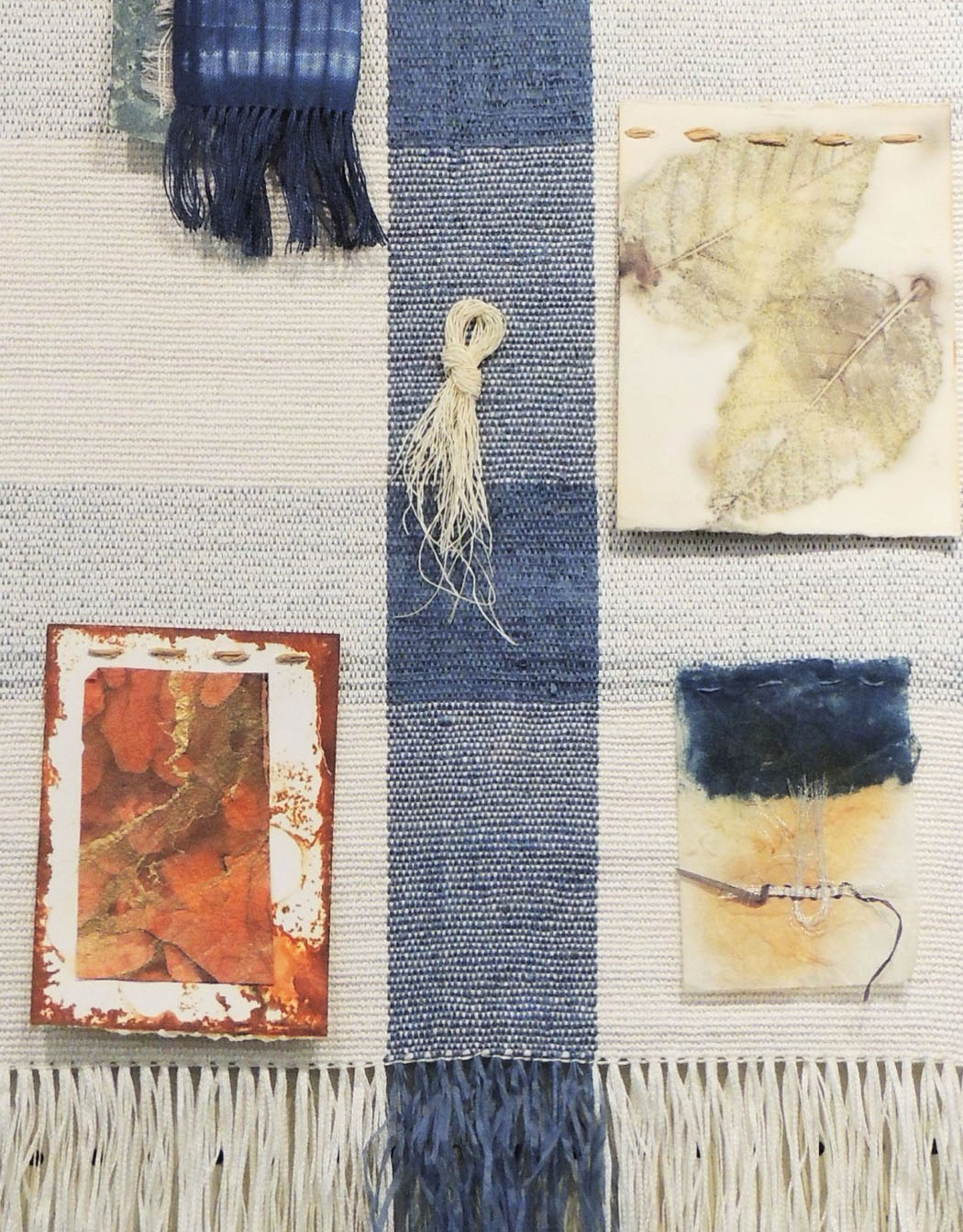
For more information: hawaiihandweavers.org
Weaving classes and activities on Hawai‘i Island
Weaving Day at Tūtū’s House
First Friday of each month, 1–3pm
64-1032 Mamalahoa Hwy., #305, Kamuela
808.885.6777
Friday Weavers
Former Island Yarn and Art Supplies
Fridays, 11am–2pm
73-5568 Olowalu St., Kailua-Kona
808.326.2820
Big Island Chapter, Hawai‘i Handweavers’ Hui Meeting, “iWeave It”
June 14, 1–4pm
North Hawaii Education and Research Center
45-539 Plumeria St., Honoka‘a
808.775.8890
*King Cotton, The Spinning Wheel and Loom in The Sandwich Islands, The Story of a Missionary Spinster, An Ambitious, Wealthy Hawaiian Chief, and an Island Industry that Never Quite Made It, by Rossie Moodie Frost.

